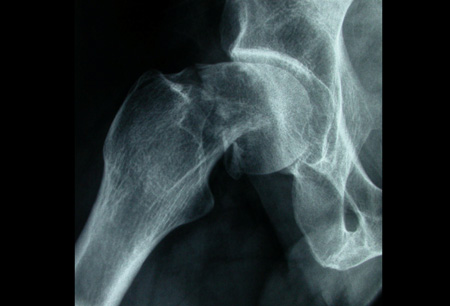Summary
Definition
History and exam
Key diagnostic factors
- history of fall or trauma
- pain in the affected hip, groin, or thigh
- inability to bear weight or move the hip
- shortened, externally rotated leg
- risk factors
Risk factors
- osteoporosis/osteopenia
- older age
- falls
- low body mass index (BMI)
- female sex
- high-energy trauma
- medications
- dementia
Diagnostic investigations
1st investigations to order
- plain radiographs
- full blood count
- urea and electrolytes
- glucose
- group and save
- coagulation screen
- ECG
Treatment algorithm
Contributors
Expert advisers
Michael Barrett, MBChB, FRCS (Tr & Orth), PG Cert Med Ed
Consultant Trauma and Orthopaedic Surgeon
Cambridge University Hospitals NHS Foundation Trust
Cambridge
UK
Disclosures
MB is a director of Orthohub.xyz, an online education platform for orthopaedic surgeons. Orthohub.xyz receives sponsorship from the healthcare industry.
Acknowledgements
BMJ Best Practice would like to gratefully acknowledge the previous team of expert contributors, whose work has been retained in parts of the content:
Zoe Little
ST6 in Trauma and Orthopaedics
Epsom and St Helier University Hospitals
Epsom
UK
Brett Griffiths
Specialist Registrar
Norfolk and Norwich University Hospitals
Norwich
UK
Hiba Khan
ST4 in Trauma and Orthopaedics
Croydon University Hospital
London
UK
Disclosures
ZL, BG, and HK declare that they have no competing interests.
Peer reviewers
Antony Johansen, MB BChir
Consultant Orthogeriatrician
University Hospital of Wales
Cardiff
UK
Biography
AJ is clinical lead for the National Hip Fracture Database, Royal College of Physicians, London, UK.
Disclosures
AJ has been a co-applicant or collaborator in successful applications for non-commercial grants from the NIHR Health Technology Assessment Programme, Physiotherapy Research Foundation, and Versus Arthritis.
Use of this content is subject to our disclaimer
